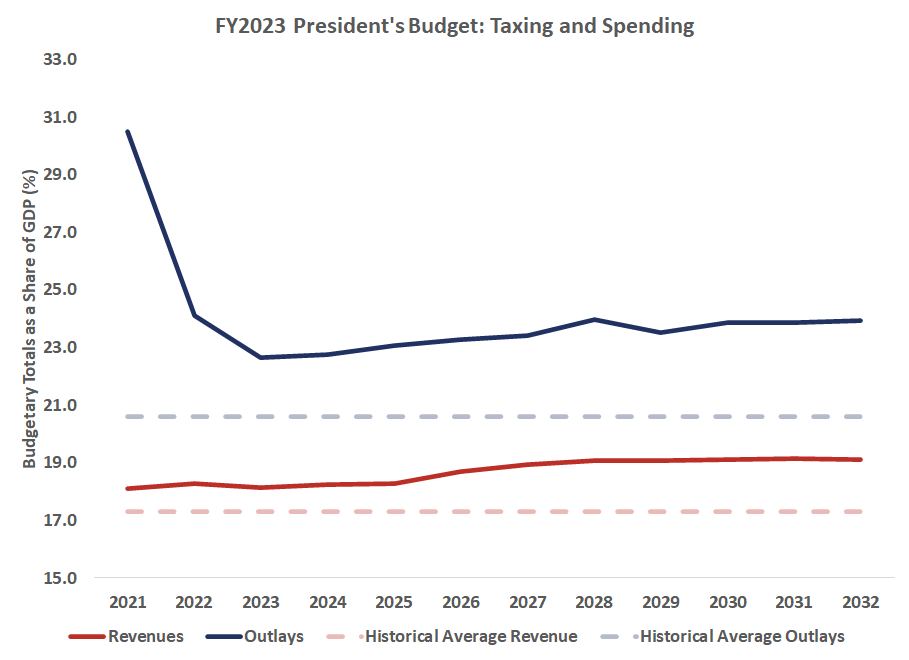Insight
March 28, 2022
Highlights of the FY2023 President’s Budget
By the Numbers
Taxes: The President’s Budget assumes substantially increased tax revenue, both as a function of assumed growth and through proposed tax increases. The Office of Management and Budget (OMB) estimates that the President’s Budget proposes $2.5 trillion in tax increases relative to OMB’s baseline. Revenues in the President’s Budget are projected to increase as a share of gross domestic product (GDP), from slightly above the 50-year average of 17.3 percent to 19.1 percent of GDP – nearly two percentage points above the 50-year average. Over 10 years, the budget proposes an average level of taxation of 18.8 percent, higher than any 10-year period in the history of the modern U.S. tax system.
Spending: By the end of the budget window, the President’s Budget would increase spending by nearly $1.4 trillion over the next 10 years, compared to OMB’s baseline. As a share of GDP, spending would reach 23.9 percent of GDP, over 3 percentage points higher than the 50-year average by 2032. Over the next decade, spending would average 23.4 percent of GDP.
Deficits: The President’s Budget assumes projected deficits totaling $14.4 trillion over the next decade. OMB estimates the deficit will decline from $1.4 trillion this year to nearly $1.8 trillion in 2032. Deficits are projected to exceed $1 trillion every year over the next decade.
Interest Payments: Interest payments on the debt will reach $1.1 trillion in 2032. This reflects a more than tripling of debt service costs of $357 billion in 2022. The $1.1 trillion debt service costs would exceed the budget of all federal agencies by the end of the budget window.
Debt Held by the Public: Borrowing from the public would increase as a share of the economy under the President’s Budget, increasing from 99.7 percent of GDP in FY2021 to 106.7 percent of GDP in 2032. Even during World War II, the debt never reached this level.
Economic Projections
The President’s Budget includes more optimistic economic projections than does the Congressional Budget Office’s (CBO) July forecast in terms of real GDP growth, unemployment, and inflation. Under the President’s Budget, real GDP is assumed to grow about 0.7 percentage points faster than under CBO, while OMB assumes, on average, 0.5 percent lower unemployment and 0.1 percent lower inflation. These effects combine to increase tax revenues and reduce debt service, though CBO’s 10-year interest rate forecast is slightly lower than OMB’s. It is important to note that CBO’s forecast is somewhat outdated, as the agency has not updated its budget and economic outlook since last July.












